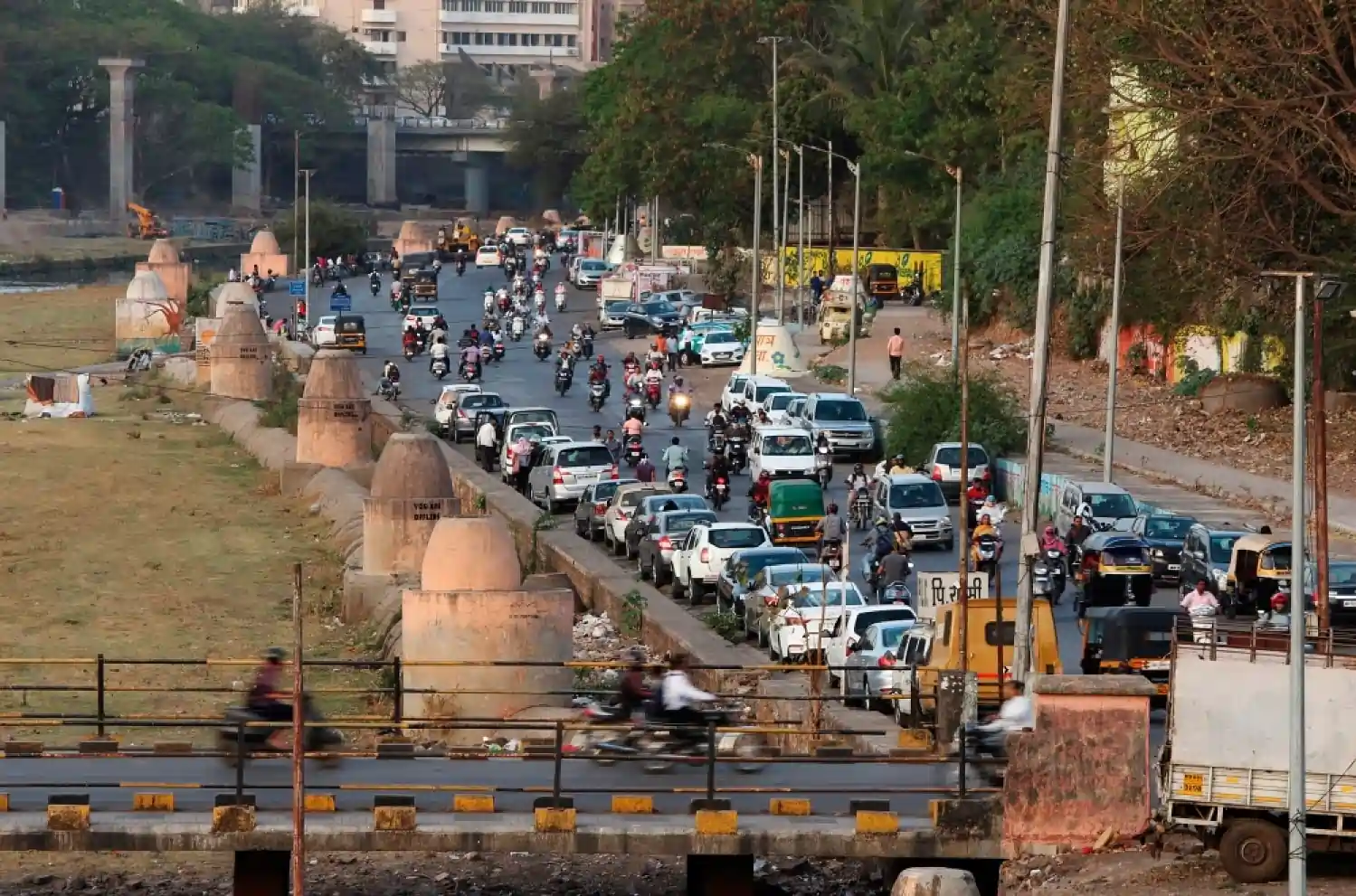Picture this: the average commuter in Pune spends a staggering 108 hours – that's 5 days – every year stuck in traffic. This isn't just a feeling; it's a finding from the 2024 TomTom Traffic Index, painting a stark picture of the daily reality on Pune's roads.
Pune, a city celebrated for its IT sector and educational institutions, is facing a mobility/commuting problem on a big scale. The sheer volume of 72 lakhs vehicles vying for space on its roads has created the daily commute a challenge for many Pune residents.
The repercussions extend beyond mere inconvenience. For daily car commuters, this becomes lost productivity, increased fuel consumption, and a significant impact on personal well-being. For the city's economy, it means wasted hours and logistical hurdles. Environmentally, the idling vehicle engines stuck at traffic contribute to rising air pollution levels, a concern highlighted in various reports like AQI website air quality for Pune dashboard with live data stream of air quality in the city.
But what if you could navigate this urban maze with more efficiency and less stress? This guide, drawing on data and insights and another option of hiring driver for your commute, aims to equip you with the knowledge and strategies to make your daily commute in Pune traffic more manageable.
1. The Pulse of Pune's Roads: Understanding Today's Traffic Flow
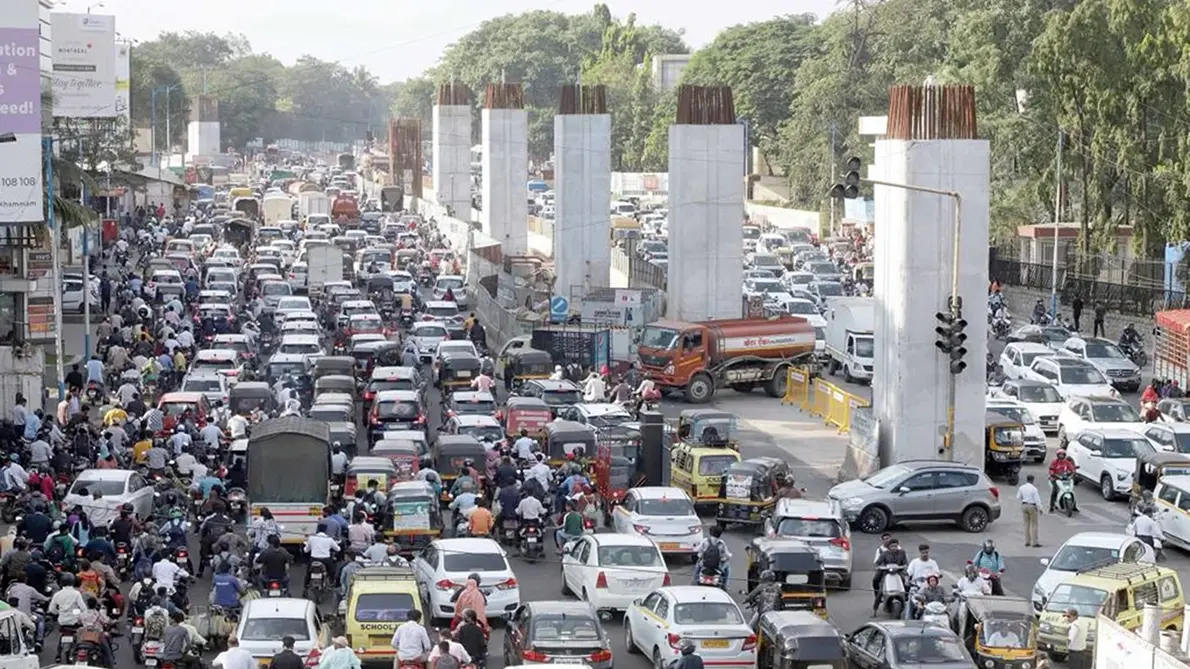
Before you even reach for your car keys, understanding the current pulse of traffic in Pune today is crucial. Are there unexpected snarls in your usual route? Is the Hinjewadi traffic today particularly heavy due to a tech park event? Are there reports of a major traffic jam in Pune today affecting your travel?
Fortunately, a wealth of real-time information is available at your fingertips. Apps like Google Maps and Mappls provide live traffic updates, visually indicating congestion levels and suggesting alternative paths. Following the official Twitter handle of the Pune City Traffic Police can also provide timely alerts about road closures, diversions, and major incidents causing Pune traffic disruptions.
2. Why the Gridlock? Decoding Pune's Traffic Hotspots and Causes
To understand Pune city traffic, it's essential to recognize the recurring congestion hotspots and the systemic factors contributing to them.
Predictable Peaks
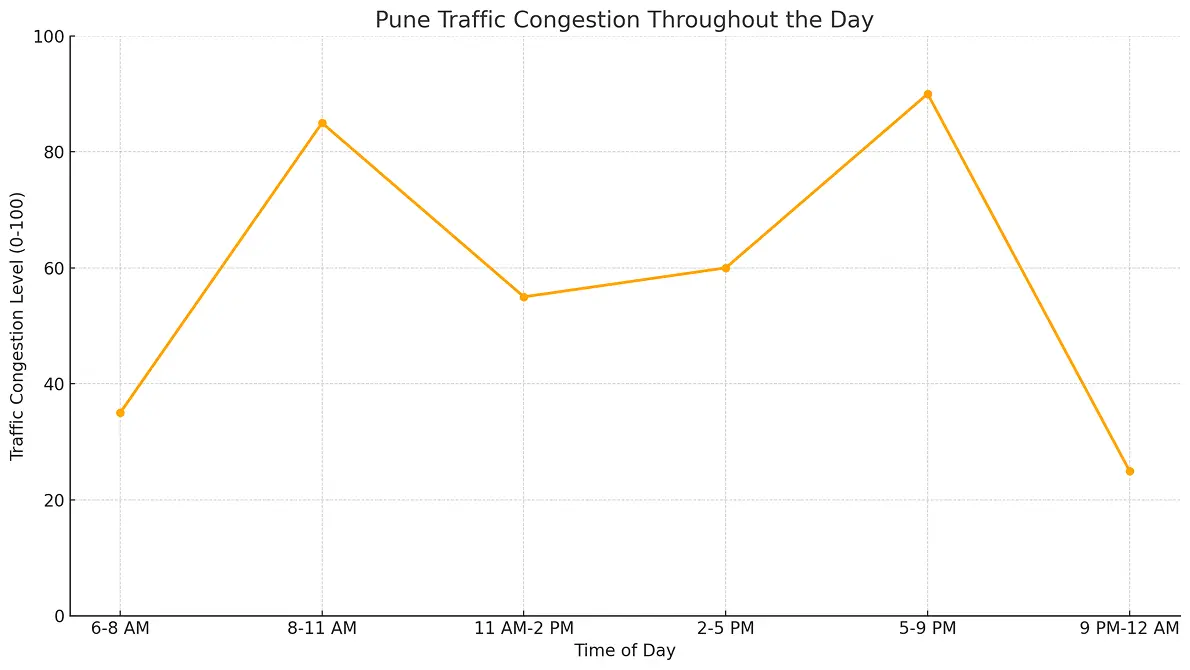
Pune's traffic flow follows a familiar pattern, with peak congestion typically occurring during the morning rush (8 AM to 11 AM) and the evening rush (5 PM to 9 PM) as commuters head to and from work and educational institutions.
Persistent Problem Areas
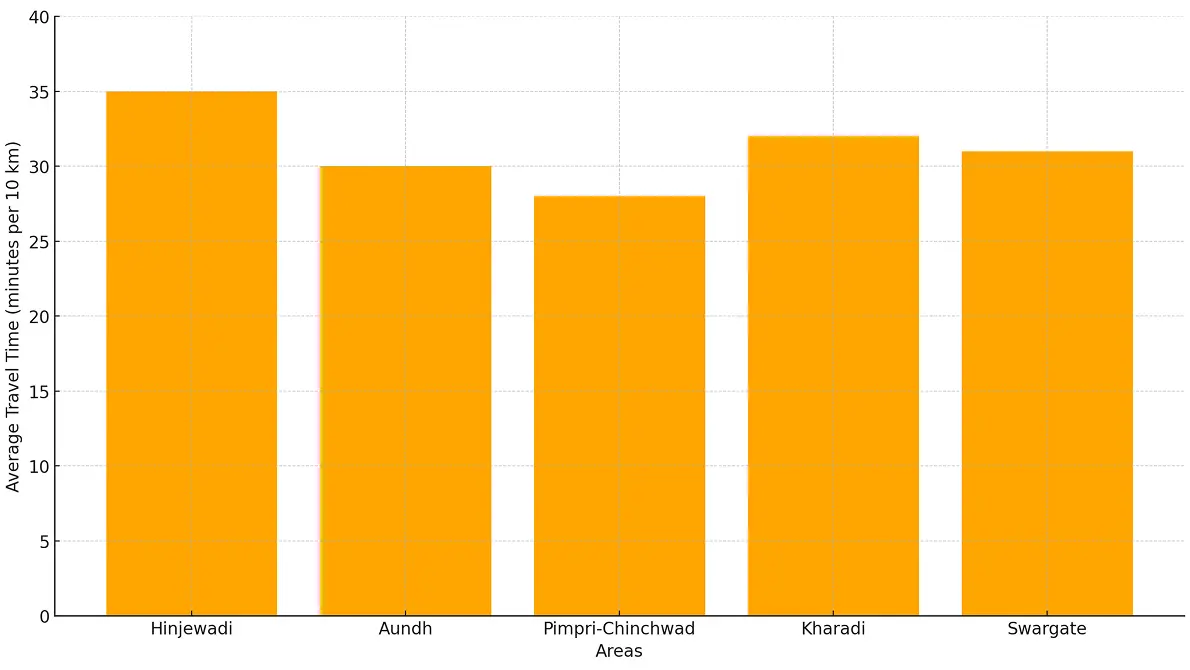
Certain junctions and corridors consistently experience high traffic volume:
- Hinjewadi: As a major employment hub, the influx and outflow of vehicles during peak hours create significant bottlenecks. To avoid the loss of time, you can hire a driver in Hinjewadi so drivers can take you to your destination while you relax and do your work.
- Aundh: This area, with its mix of residential and commercial hubs, experiences significant traffic, especially around the Aundh-Baner Link Road and key intersections. For those looking to navigate this busy area efficiently, hiring a driver in Aundh can save valuable time.
- Pimpri-Chinchwad: As a major industrial and residential zone, the roads in Pimpri-Chinchwad, particularly the Pune-Mumbai Road and internal roads, often face heavy traffic. Commuters in this region can find relief from the congestion by opting to hire a driver in Pimpri-Chinchwad for their daily travel.
- Kharadi: With the rapid growth of IT and commercial establishments, Kharadi has become a significant traffic hotspot, particularly around EON IT Park and the connecting roads. To navigate the often-heavy traffic in this area with ease, consider hiring a driver in Kharadi.
- Swargate: As a major intercity bus terminus and a central commercial area, Swargate is often characterized by chaotic traffic conditions. Rush hour and huge numbers of people traveling through and by create a chaotic traffic situation.
The reasons behind these persistent jams are complex:
- Exponential Vehicle Growth: Pune has witnessed a staggering 72 lakh vehicles on its roads, as of recent reports in Pune Mirror and Free Press Journal, a significant jump from 52 lakh in 2018, overwhelming the existing infrastructure.
- Strain on Public Transportation: The Promising Pune Metro project is developing, but the current public transport system's capacity has reached development is not the same pace with the city's growth, pushing more people towards private vehicles.
- Infrastructure Lag: In certain areas, the road network's capacity hasn't expanded sufficiently to accommodate the increasing traffic volume, leading to inevitable traffic jams.
- Impact of Construction: Ongoing infrastructure projects, including the crucial metro lines, often lead to road diversions and temporary closures, exacerbating existing congestion.
- Traffic Discipline: Challenges with lane discipline and adherence to traffic rules by some commuters further contribute to the disarray on the roads.
3. Data-Driven Insights: The Numbers That Speak Volumes
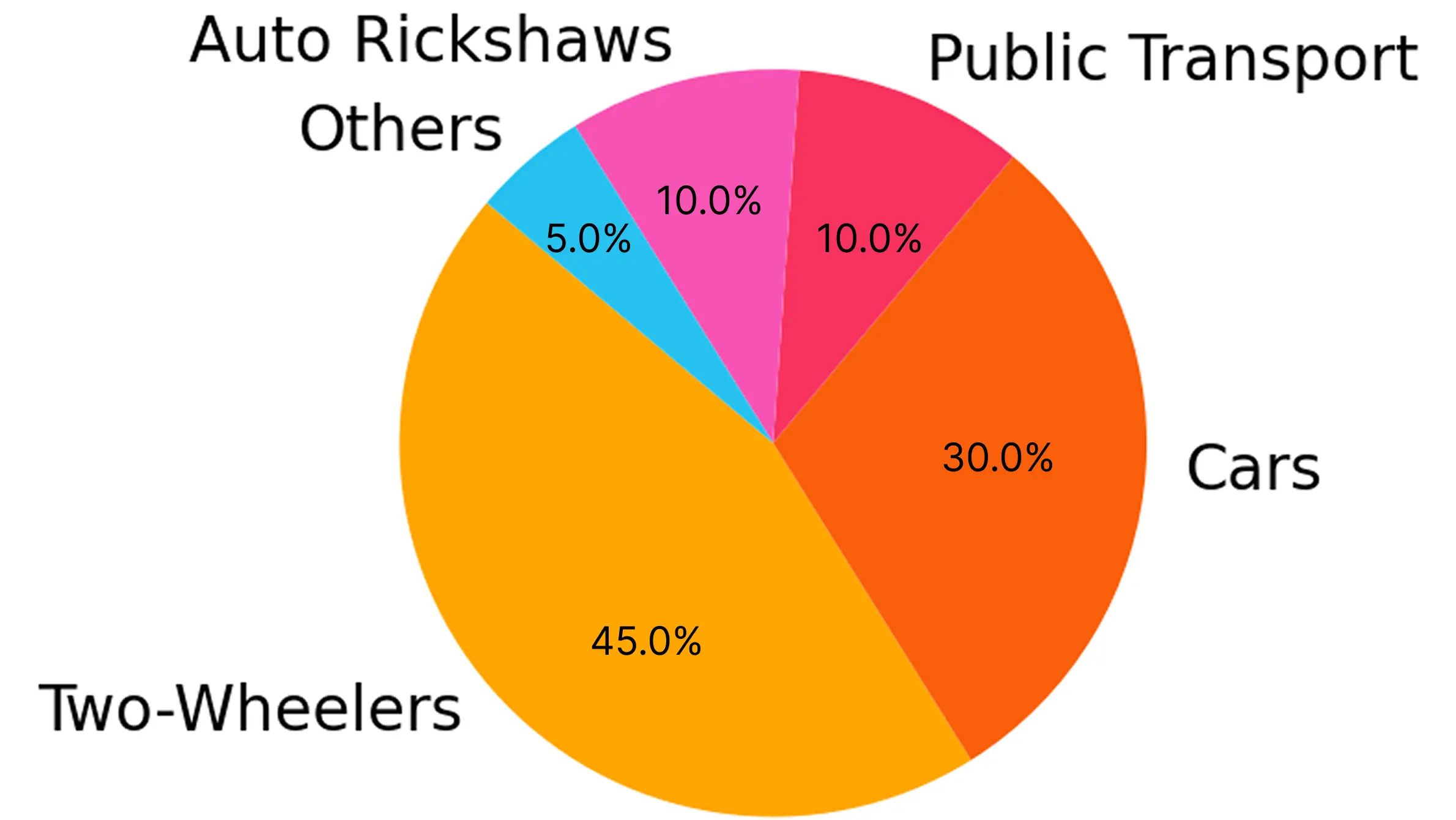
In the TomTom traffic report, Pune consistently places the city in the upper echelons of global congestion rankings. In 2024, Pune was ranked fourth in overall traffic and congestion worldwide, with commuters losing an average of 108 hours annually in traffic. This creates a significant amount of unproductive time and wasted fuel while the public and environment take the toll.
The environmental cost of this congestion is also substantial. Vehicles idling in traffic emit lots of pollutants than those moving efficiently. (You're burning fuel and emitting pollutants but not going anywhere, so emissions per kilometer/mile are much higher.) This contributes to Pune's air quality concerns and the broader issue of climate change. Data from the PMC traffic planning documents often highlight the need for sustainable transport solutions to mitigate these environmental impacts.
4. Your Survival Toolkit: Expert Tips for Commuting Through Pune Traffic
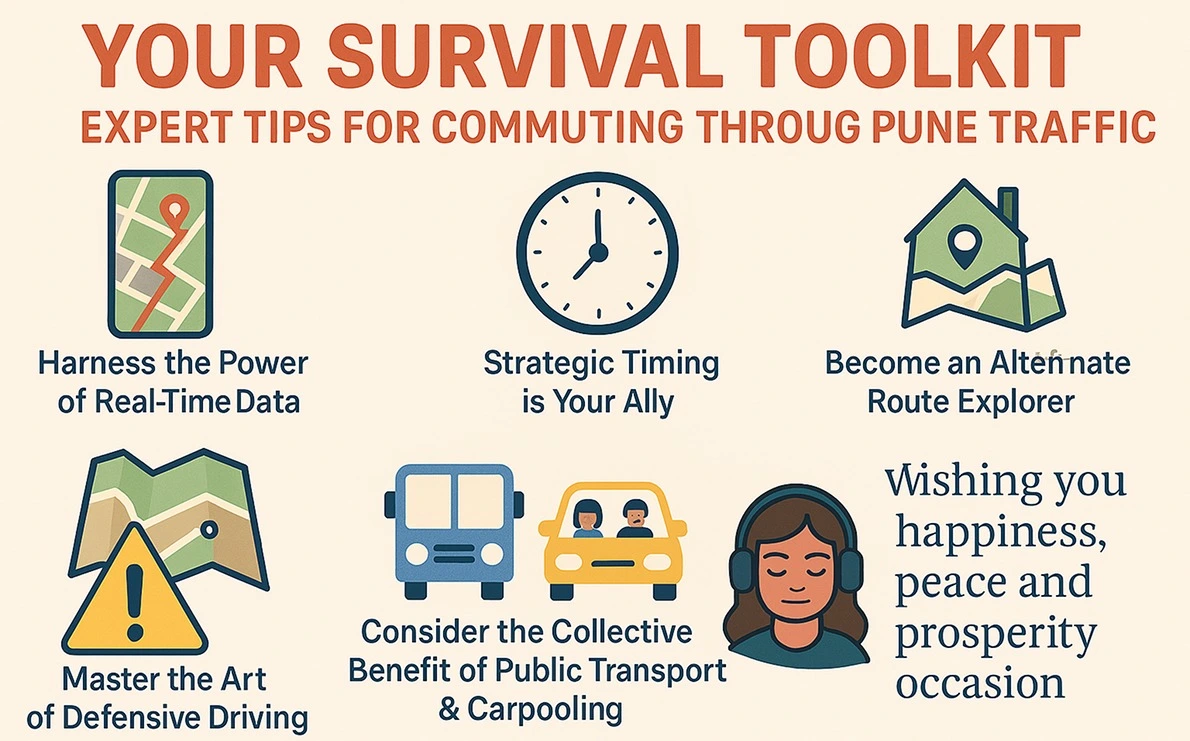
Effectively navigating Pune traffic requires a proactive and informed approach. Here's a set of expert tips to help you reclaim your commute:
- Harness the Power of Real-Time Data: Before you start your journey, always check real-time traffic apps like Google Maps or Mappls. These tools provide invaluable insights into current congestion levels and can suggest faster alternative routes.
- Strategic Timing is Your Ally: If your schedule permits, try to avoid traveling during the absolute peak hours. Even a slight adjustment in your departure time can lead to a significantly smoother commute.
- Become an Alternate Route Explorer: Invest time in identifying less congested alternative routes to your regular destinations. Familiarity with the city's road network beyond the main arteries can be a game-changer during heavy traffic.
- Consider the Collective Benefit of Public Transport & Carpooling: Pune's PMPML bus service and the expanding metro network offer viable alternatives to driving. Explore these options, especially for regular commutes to crowded areas. Carpooling with colleagues or neighbors not only reduces traffic but also saves on fuel costs.
- Master the Art of Defensive Driving: In Pune's often chaotic traffic, defensive driving is paramount. Maintain a safe distance from the vehicle ahead, be extra vigilant for two-wheelers and pedestrians, and anticipate sudden stops.
- Cultivate Calm Amidst the Chaos: Getting stressed in traffic is understandable, but it doesn't improve the situation. Try listening to calming music, an engaging podcast, or an audiobook to make the time more bearable.
5. Handling the Unexpected: Dealing with Breakdowns and Emergencies

Despite meticulous planning, a car breakdown or emergency can still occur. Here's a step-by-step guide:
- Secure Your Vehicle First: If your car malfunctions, try your best to steer it to the side of the road or a designated safe zone. Immediately activate your hazard lights to warn approaching vehicles.
- Essential Emergency Kit: Ensure your vehicle is equipped with a basic emergency kit, including a spare tire, jack, lug wrench, jumper cables, a first-aid kit, and a reflective warning triangle.
- Know Who to Call: Keep the contact numbers for your car's roadside assistance service and the Pune City Traffic Police helpline (020-2553 6767) readily accessible.
- Stay Safe: If you need to exit your vehicle, do so cautiously, preferably on the side away from the traffic flow. If possible, wait inside your car with your seatbelt on until help arrives.
- Legal Considerations: In case of an accident, exchange information with the other involved parties and report the incident to the nearest police station as per legal requirements. Keep your vehicle insurance and registration documents updated.
6. The Bigger Picture: Understanding Traffic Management Efforts
The Pune Municipal Corporation (PMC traffic planning) and the Pune Traffic Police are actively implementing various strategies to combat traffic congestion:
- Intelligent Traffic Management Systems (ITMS): Utilizing technology to optimize traffic signal timings based on real-time traffic flow, aiming to improve overall efficiency.
- Infrastructure Development: Investing in the construction of flyovers, underpasses, and the widening of existing roads to enhance connectivity and alleviate bottlenecks at key junctions.
- Focus on Sustainable Mobility: Promoting the use of public transport through the expansion of the metro network and improvements to the bus service. Encouraging cycling and walking through the development of dedicated infrastructure.
- Enforcement and Awareness: Implementing stricter enforcement of traffic rules and conducting public awareness campaigns to promote responsible driving behavior.
7. Tech to the Rescue: Leveraging Technology for Smoother Commutes

In today's digital age, technology is an indispensable tool for navigating traffic:
- Real-Time Navigation and Traffic Updates: Utilize apps like Google Maps, Mappls, and Waze for live traffic conditions, route suggestions, and estimated travel times.
- Public Transport Information: Apps like Moovit provide real-time schedules and information for Pune's bus and metro services.
- Social Media for Updates: Follow the Pune City Traffic Police on Twitter for immediate updates on road closures, accidents, and diversions.
- Breakdown Assistance: Apps from various roadside assistance providers or general service platforms like Justdial can help you quickly connect with help in case of a vehicle breakdown.
8. Driveronhire.com: Your Partner in a Stress-Free Pune Commute
For daily commuters and those who value their time and peace of mind, Driveronhire.com offers a practical solution to the challenges of Pune traffic. Hiring a professional and experienced driver who is familiar with Pune's roads can transform your daily commute from a stressful ordeal into a comfortable and productive experience.
Our drivers are skilled at navigating Pune's traffic, finding the best routes, and handling unexpected delays. This allows you to utilize your commute time for work, relaxation or simply avoid the fatigue and frustration of driving in heavy traffic.
Conclusion: Charting a Course Towards a More Mobile Pune
While Pune traffic presents a significant daily challenge, understanding its dynamics and utilizing the available tools and strategies can empower you to navigate it more effectively. From leveraging real-time data and exploring alternative routes to considering public transport and being prepared for emergencies, every informed decision contributes to a smoother commute.
We encourage all Pune residents to adopt these tips and explore the various options available to them for a less stressful journey.
Pune's transportation landscape is continuously evolving with ongoing infrastructure projects and a growing focus on sustainable mobility. By staying informed and making conscious choices about our travel, we can collectively contribute to a more efficient and less congested Pune for the benefit of all.
FAQ
Q.1: Why is traffic so bad in Pune?
Pune's rapid growth as an IT and educational hub has led to a massive increase in the number of vehicles on the road (over 72 lakhs), overwhelming the existing infrastructure. While public transport is developing, many still rely on private vehicles, causing significant congestion, especially during peak hours.
Q.2: How can I get real-time updates on Pune traffic?
You can use apps like Google Maps and Mappls, which provide live traffic conditions and suggest alternative routes. Following the official Twitter handle of the Pune City Traffic Police can also give you timely alerts about road closures and major incidents.
Q.3: What are the typical peak traffic hours in Pune?
Generally, peak traffic hours in Pune are in the morning from 8 AM to 11 AM as people commute to work and educational institutions, and in the evening from 5 PM to 9 PM as they return home.
Q.4: Which areas in Pune are most likely to experience traffic jams?
Several areas are known for frequent traffic congestion, including Hinjewadi, Aundh, Pimpri-Chinchwad, Kharadi, Swargate, Katraj Chowk, and the main roads in the city center like JM Road and FC Road.
Q.5: How can I find alternative routes to avoid traffic congestion in Pune?
Use real-time navigation apps like Google Maps or Mappls. These apps often suggest alternative routes based on current traffic conditions. Familiarizing yourself with the city's road network beyond the main roads can also help you discover less congested paths.
Q.6: What public transportation options are available in Pune?
Pune offers public transportation through PMPML buses and an expanding metro network. These can be good options to avoid the stress of driving in traffic, especially on regular commutes.
Q.7: What should I do if my car breaks down in Pune traffic?
If your car breaks down, try to move it to the side of the road and turn on your hazard lights. If you have an emergency kit, use the reflective warning triangle. Contact roadside assistance or the Pune City Traffic Police helpline (020-2553 6767) for help.
Q.8: What is being done to improve the traffic situation in Pune?
The Pune Municipal Corporation (PMC) and the Pune Traffic Police are working on several initiatives, including optimizing traffic signals, developing infrastructure like flyovers and underpasses, promoting sustainable transport like the metro and cycling, and enforcing traffic rules.
Q.9: How can hiring a driver help me with Pune's traffic?
Hiring a professional driver familiar with Pune's roads, like through Driveronhire.com, can significantly reduce the stress of navigating traffic. You can use your commute time for work or relaxation while someone else handles the driving and finds the best routes.
Q.10: How does Pune's traffic congestion affect the environment?
Vehicles stuck in traffic idle for long periods, leading to increased emissions of pollutants, which contributes to air pollution in Pune and the broader issue of climate change. Reducing traffic congestion is important for improving air quality.
